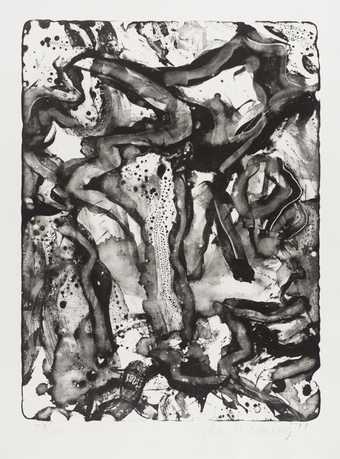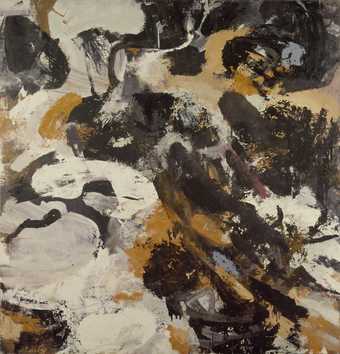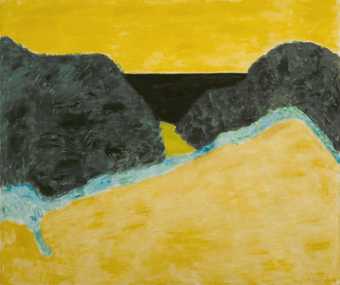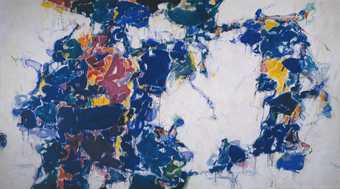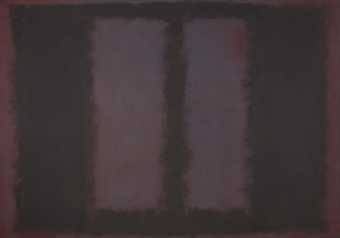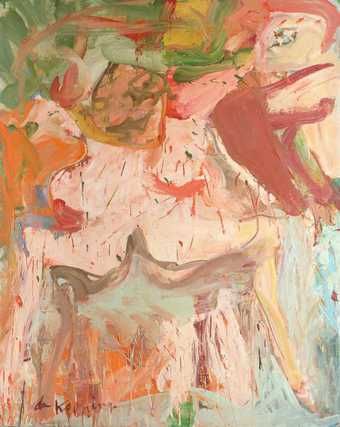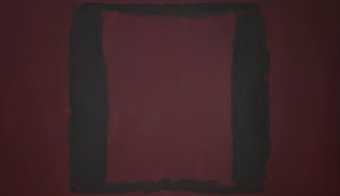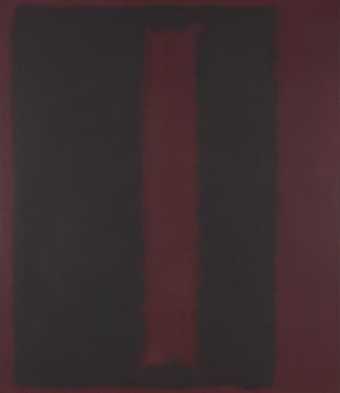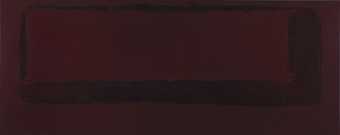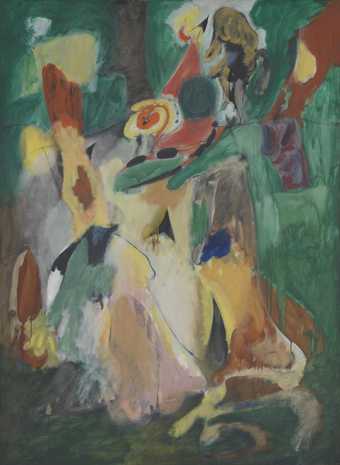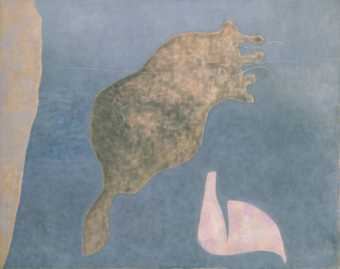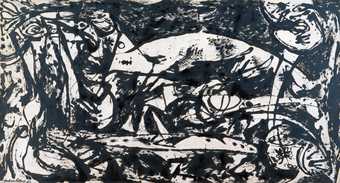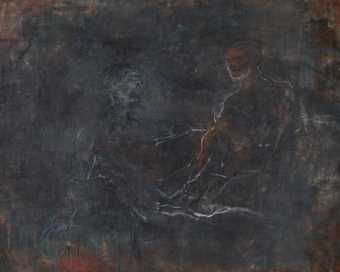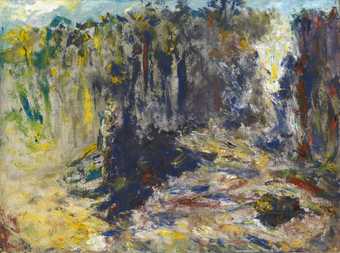
In Tate Modern
- Artist
- Lee Krasner 1908–1984
- Medium
- Oil paint on canvas
- Dimensions
- Support: 1768 × 2378 mm
frame: 1784 × 2391 × 52 mm - Collection
- Tate
- Acquisition
- Purchased 1981
- Reference
- T03291
Display caption
Although this is an abstract painting, the thick vertical lines that dominate its centre can be seen as trees, with thick knotted roots at their base. It was probably this that led Krasner to call the painting Gothic Landscape, several years after completing it. Krasner was married to the artist Jackson Pollock. Gothic Landscape was made in the years following his death from a car crash in 1956. It belongs to a series of large canvases whose violent and expressive gestural brushstrokes can be read as a reflection of her grief.
Gallery label, August 2019
Does this text contain inaccurate information or language that you feel we should improve or change? We would like to hear from you.
Catalogue entry
T03291 GOTHIC LANDSCAPE 1961–2
Not inscribed
Oil on cotton duck, 69 1/4 × 93 1/2 (176.8 × 237.8)
Purchased from the Pace Gallery (Grant-in-Aid) 1981
Exh: Lee Krasner Paintings 1959–62, Pace Gallery, New York, February–March 1979 (works not numbered, repr.in colour)
Lit: Barbara Cavaliere, ‘An Interview with Lee Krasner’, Flash Art, no.94–5, January–February 1980, pp.14–16
Lee Krasner's ‘Gothic Landscape’ was not included in the exhibition of works of a similar date at the Howard Wise Gallery, New York, in March 1962 because, although it was part of the series shown there, it was then still unfinished.
The series was begun in East Hampton in daylight (the conditions Krasner preferred) in Jackson Pollock's studio which she had used since 1957, but completed in artificial light in New York. Krasner was under great personal strain at the time; her mother had recently died, and she felt that a bitter argument with the influential critic Clement Greenberg had thrust her ‘back into the wilderness’. She suffered from insomnia and began to paint at night, using a much reduced palette. (The umber has been nicknamed Ahab-brown-the colour of the Pollocks' poodle).
In an interview with Richard Howard published in the catalogue of her 1979 Pace Gallery exhibition, Krasner referred to this period of torment and the release she achieved through the large paintings with their expressive, violent brushstrokes. She is quoted as saying: ‘There's no question that this work was a turning point of sorts for me and that there was a great deal behind it ...One wants to extend the outer limits rather than close off; to expand rather than work in a restricted area’.
She told the compiler on 5 April 1982 that she acknowledged nature as a prime source of inspiration for these paintings, and pointed out that the trees in the background of her ‘Self-Portrait’ of c.1930 (oil on linen, 30 7/8 × 25 5/8in.) are similar in form to the shapes in this painting.
The title of this work (like those of the others in this series) was decided by Krasner, Richard Howard and Sandy Friedman in discussion; the artist recalled that this work was not titled until 1978 when it was shown at the Pace Gallery.
Published in:
The Tate Gallery 1980-82: Illustrated Catalogue of Acquisitions, London 1984
Explore
- abstraction(8,615)
-
- from recognisable sources(3,634)
-
- landscape(1,191)
- emotions and human qualities(5,345)
-
- anxiety(1,028)
- gestural(763)
You might like
-
Willem de Kooning Landscape at Stanton Street
1971 -
James Brooks Boon
1957 -
Milton Avery Yellow Sky
1958 -
Sam Francis Around the Blues
1957, 1962–3 -
Mark Rothko Black on Maroon
1958 -
Willem de Kooning The Visit
1966–7 -
Mark Rothko Black on Maroon
1959 -
Mark Rothko Black on Maroon
1959 -
Mark Rothko Red on Maroon
1959 -
Arshile Gorky Waterfall
1943 -
William Baziotes Mammoth
1957 -
Jackson Pollock Number 14
1951 -
Mark Rothko Untitled
c.1946–7 -
Nancy Spero Lovers
1962 -
Jack Butler Yeats A Rose Among Many Waters
1952

